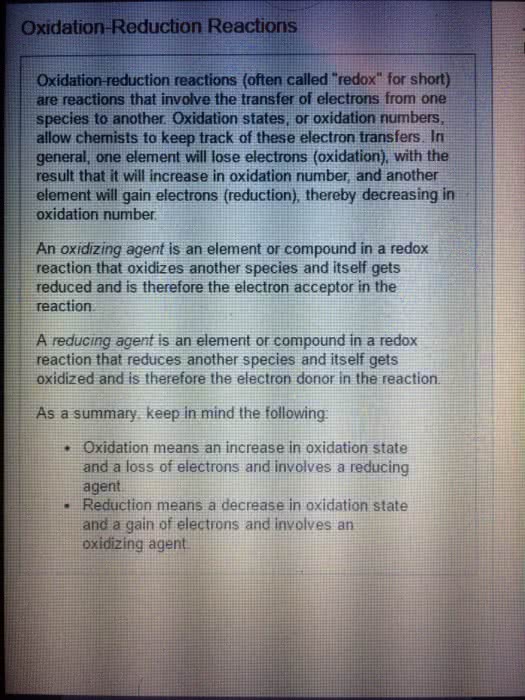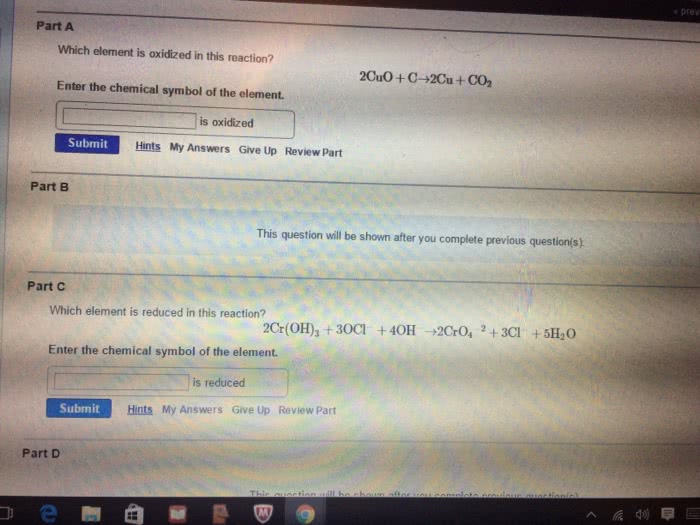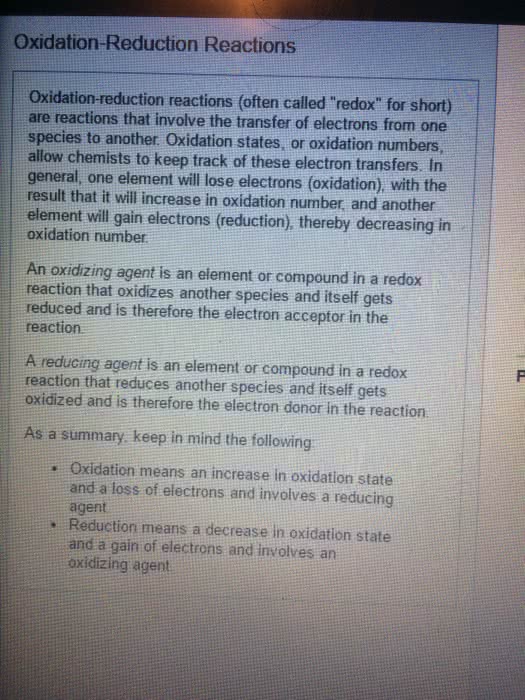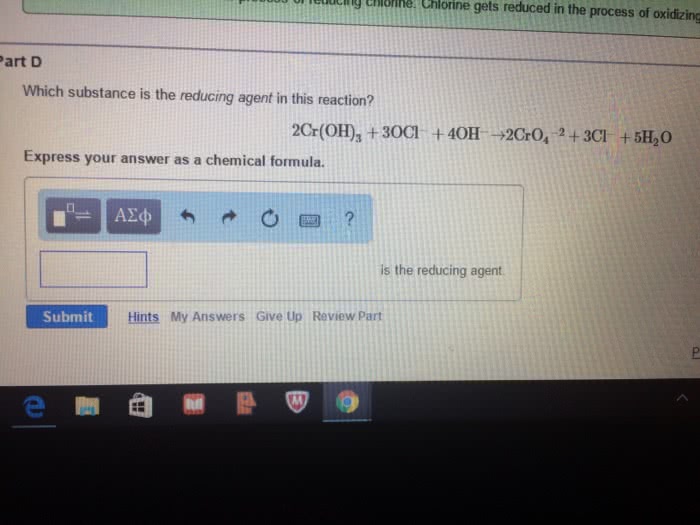CHEM 102 Lecture Notes - Lecture 3: Electroplating, Intensive And Extensive Properties, Electrolytic Cell
Document Summary
Electrochemical cells: in electrochemical reactions, electrons are transferred from one species to another, oxidation numbers. In order to keep track of what loses electrons and what gains them, we assign oxidation numbers. Oxidation-reduction reactions: the reactions in which electrons are transferred from one reactant to the other are called oxidation-reduction reactions. Many redox reactions involve the reaction of a substance with oxygen. Combustion: 2c8h18(l) + 25o2(g) -> 16co2(g) + 18h2o(g: to convert a free element into an ion, the atoms must gain or lose electrons. If one atom loses electrons, another must accept them: atoms that lose electrons are being oxidized. The reaction is referred to as oxidation: atoms that gain electrons are being reduced. The reaction is referred to as reduction. Redox reactions: oxidation and reduction must occur simultaneously. If an atom loses electrons, another atom must take them: the reactant that reduces an element in another reactant is called the reducing agent.





